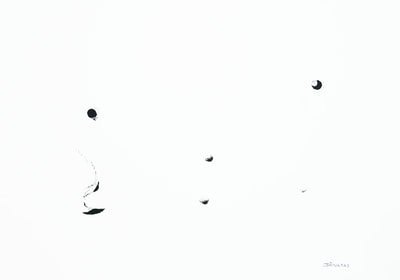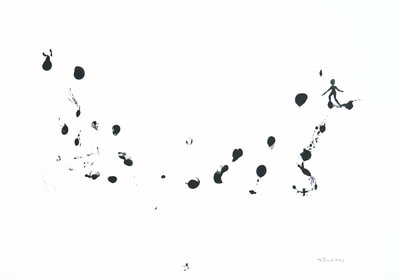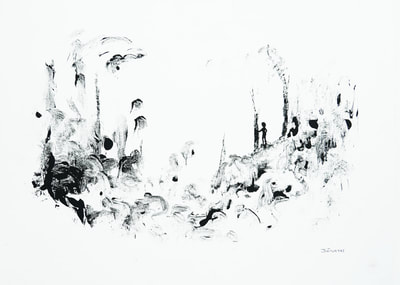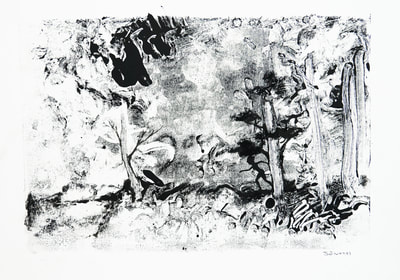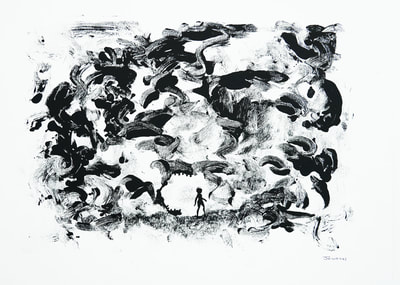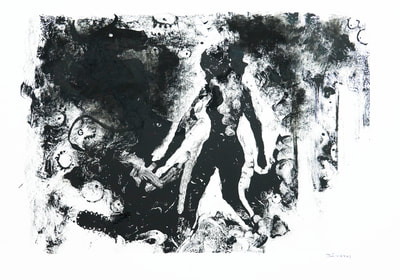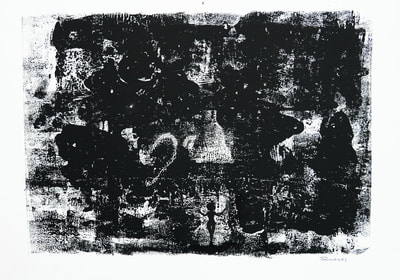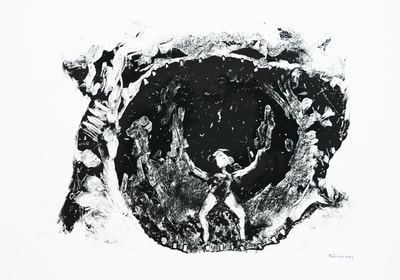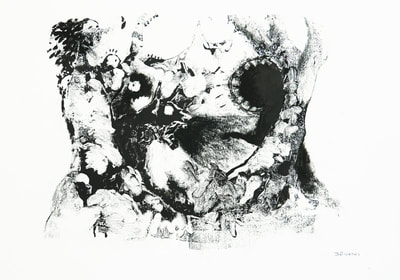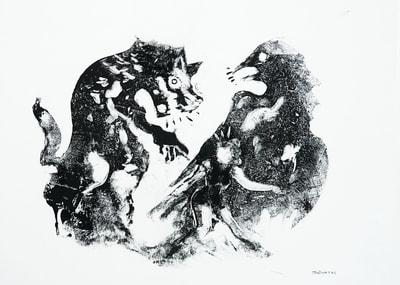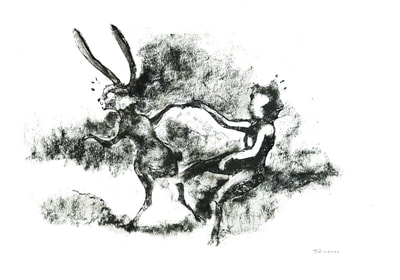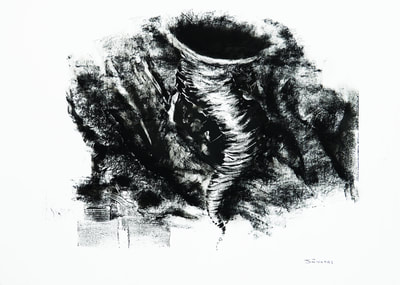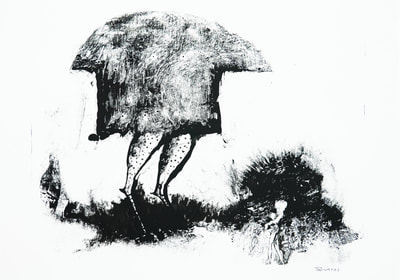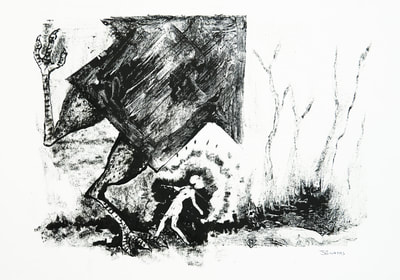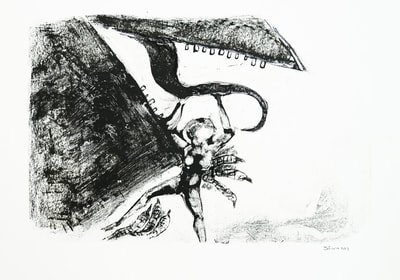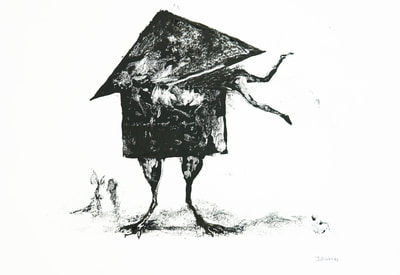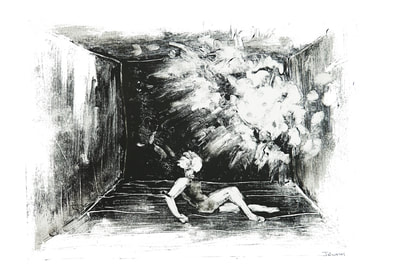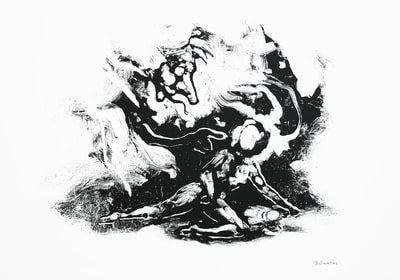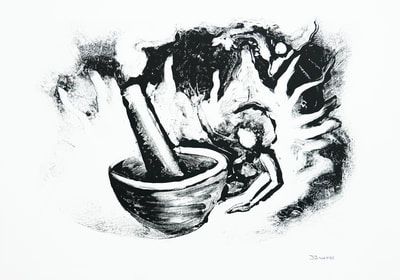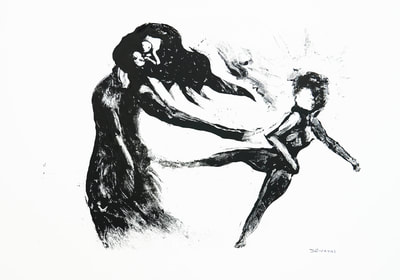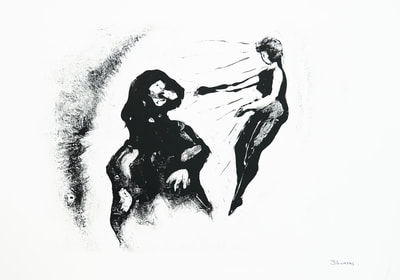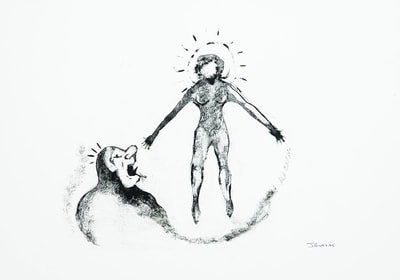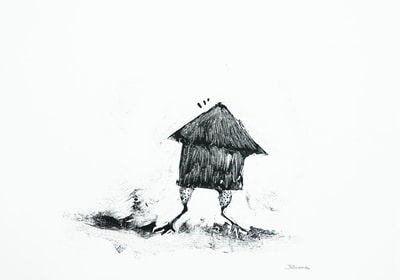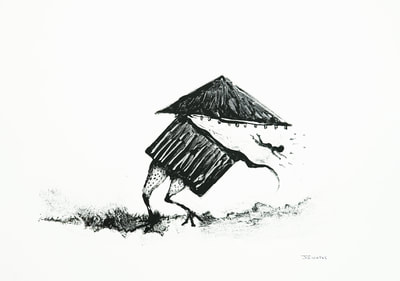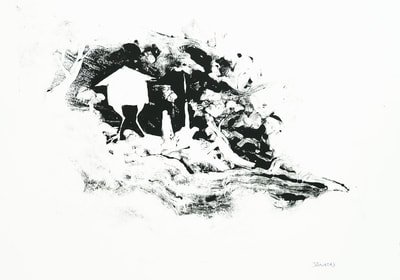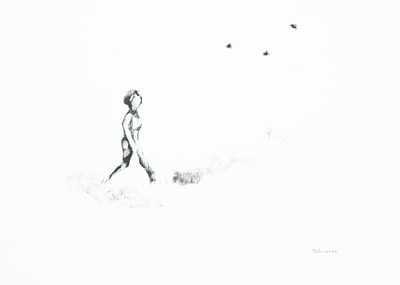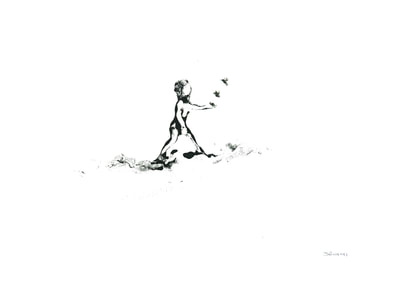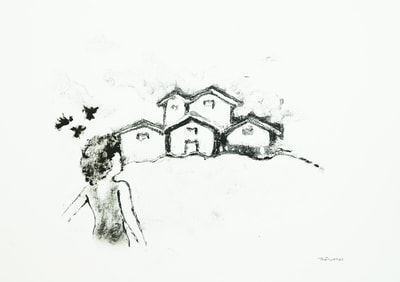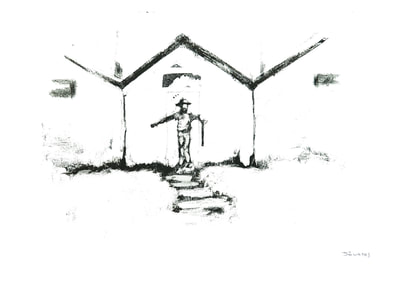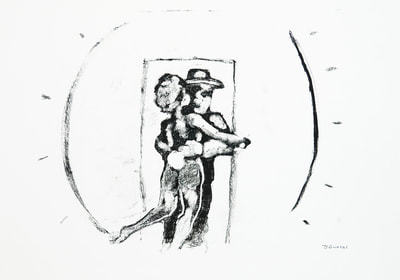Baba yaga
Tales of a Russian Witch and a Discussion on Art vs. Product
Synchronicity, Intention, and Archetype. These are the three main elements that compose most compelling, relevant, and timeless human narratives, specially those that happen to enter the realm of art. Coincidentally or not, the story that you are about to witness contains these same exact components.
Synchronicity is a concept that has puzzled some of Western World’s greatest thinkers. Dutch philosopher Baruch Spinoza in his Tractatus Theologico-Politicus argued that there are no miracles, instead, just events that appear highly synchronized. Likewise, psychiatrist Carl Jung, held the view that certain occurrences are simply “meaningful coincidences,” extrapolating that events that occur with no causal relationship may also hold great meaning in their relatedness.
When French Perfume Designer Anastasia Sokolow (Maison Sulékó) met Maurice Locke and Bhavika Mistry, founders of Osme in Miami, a highly unlikely meaningful coincidence took place, as they realized they saw perfumery as a pure art form, a kind of visual portal – like a painting, dance, or song -- that one may enter through the sense of smell: “When we smell, we immediately link the scent to the context in which we find ourselves...a place, a time, a person next to us...and this is how we build our olfactory memory which is very personal. We fill this treasure chest of scented memories at a very early age, and these become our references for the rest of our lives,” explains Anastasia.
However, this saga would not take off until another element was added, one which is commonly found in tales that survive the test of time: Intention.
Paisley Livingston explains in Art and Intention: A Philosophical Study that “in art, intentions are never infallible, so there is a conceptual gap between
the completed work and the intentions that initiate and guide its making.” For Anastasia, Maurice, and Bhavika, although they saw perfumery as an artistic form of expression, their intention was to go far beyond the paradigm, and to conclusively bring perfumery into the realm of Fine Art.
Despite this intention, all would have been lost if it were not for one last necessary ingredient: Archetypes. After all, lasting narratives must contain a symbolic language in the form of universal characters drawn from our collective unconscious, as that is the case with all great tales ever told by humankind.
The importance of archetypes is highlighted by Joseph Campbell, 20th century’s foremost expert on world mythology, who proposed that “the collective unconscious contains elements or cognitive structures which evolved over human history, and are therefore common to all…these archetypes cannot be observed directly, but manifest through various images or symbolic patterns which form the basis of many myths” ( The Hero with a Thousand Faces ).
Would these highly determined perfume enthusiasts be able to make a leap into artistic mythology? Perhaps they would, especially as Anastasia was about to release an entirely new collection based on Baba Yaga – The witch of Russian folktales -- in Miami.
In Russian folklore, Baba Yaga is seen as the embodiment of a dark force, one which we all carry deep inside. This witch encompasses all of our fears, and in order to live truly fulfilling lives, one needs to fight and defeat her.
Presented in porcelain sculpture bottles, Anastasia’s collection tells the story of a child, portrayed as a boy or a girl, man or woman, who must confront their fears: “Baba Yaga is a terrifying witch…everyone knows and fears her. This is the tale of a miserable kid, unhappy with a careless caretaker who ends up sending him or her away into the forest, where the witch awaits to attack. All alone, the child has no choice but to face Baba Yaga. By reaching within, the kid finds strength and courage to confront the witch, outpacing Baba Yaga, and winning the fight against the scariest of creatures. Now the child can finally go back to a new loving home, with the earned right to live happily ever after.”
Having synchronicity, intention, and archetypes on their side now, Anastasia, Maurice, and Bhavika were ready to make a connection with the art world: “We were willing to step outside of our medium, and so we decided to search for an artist with whom we could collaborate at the deepest conceptual level,” explains Bhavika.
That is when Maurice thought of artist Jônatas Chimen, whom he candidly calls the Michael Jordan of art, for his aggressive approach to the artistic process, and for his focus on telling the collective human experience of love, destruction, displacement, and rebirth: “Jônatas’ works are known for tapping deep into the human psyche, he is a name-brand for his museum installations that speak of his family`s journey as they escaped the Inquisition to overcome the threat of genocide. His paintings are all about archetypes of migrants, matriarchs, and families living through their diasporas. His discourse always carries an universal connotation,” expresses Maurice.
From this point on, Jônatas would readily connect with Anastasia and the story of Baba Yaga. Throughout the following few weeks Jônatas would produce over 30 paintings, and collaborate on two performance pieces with modern dance choreographer Cheina Ramos from the New World School of the Arts (see next page). Jônatas would also bring into the collaboration Miami-Based photographer Johnny Cortes and videographer Sonia
Broman, turning this project into a major artistic endeavor.
And so a few questions linger: Has a compelling, relevant, and timeless artistic experience been created here? Perhaps. Has an artistic paradigm shift occurred through this open collaboration between a perfume designer, a visual artist, a modern dance choreographer, a photographer, and a videographer? It certainly has. What is next then? That is up to you, as you now have been invited to embark on a journey that challenges all that is holding you back.
Synchronicity is a concept that has puzzled some of Western World’s greatest thinkers. Dutch philosopher Baruch Spinoza in his Tractatus Theologico-Politicus argued that there are no miracles, instead, just events that appear highly synchronized. Likewise, psychiatrist Carl Jung, held the view that certain occurrences are simply “meaningful coincidences,” extrapolating that events that occur with no causal relationship may also hold great meaning in their relatedness.
When French Perfume Designer Anastasia Sokolow (Maison Sulékó) met Maurice Locke and Bhavika Mistry, founders of Osme in Miami, a highly unlikely meaningful coincidence took place, as they realized they saw perfumery as a pure art form, a kind of visual portal – like a painting, dance, or song -- that one may enter through the sense of smell: “When we smell, we immediately link the scent to the context in which we find ourselves...a place, a time, a person next to us...and this is how we build our olfactory memory which is very personal. We fill this treasure chest of scented memories at a very early age, and these become our references for the rest of our lives,” explains Anastasia.
However, this saga would not take off until another element was added, one which is commonly found in tales that survive the test of time: Intention.
Paisley Livingston explains in Art and Intention: A Philosophical Study that “in art, intentions are never infallible, so there is a conceptual gap between
the completed work and the intentions that initiate and guide its making.” For Anastasia, Maurice, and Bhavika, although they saw perfumery as an artistic form of expression, their intention was to go far beyond the paradigm, and to conclusively bring perfumery into the realm of Fine Art.
Despite this intention, all would have been lost if it were not for one last necessary ingredient: Archetypes. After all, lasting narratives must contain a symbolic language in the form of universal characters drawn from our collective unconscious, as that is the case with all great tales ever told by humankind.
The importance of archetypes is highlighted by Joseph Campbell, 20th century’s foremost expert on world mythology, who proposed that “the collective unconscious contains elements or cognitive structures which evolved over human history, and are therefore common to all…these archetypes cannot be observed directly, but manifest through various images or symbolic patterns which form the basis of many myths” ( The Hero with a Thousand Faces ).
Would these highly determined perfume enthusiasts be able to make a leap into artistic mythology? Perhaps they would, especially as Anastasia was about to release an entirely new collection based on Baba Yaga – The witch of Russian folktales -- in Miami.
In Russian folklore, Baba Yaga is seen as the embodiment of a dark force, one which we all carry deep inside. This witch encompasses all of our fears, and in order to live truly fulfilling lives, one needs to fight and defeat her.
Presented in porcelain sculpture bottles, Anastasia’s collection tells the story of a child, portrayed as a boy or a girl, man or woman, who must confront their fears: “Baba Yaga is a terrifying witch…everyone knows and fears her. This is the tale of a miserable kid, unhappy with a careless caretaker who ends up sending him or her away into the forest, where the witch awaits to attack. All alone, the child has no choice but to face Baba Yaga. By reaching within, the kid finds strength and courage to confront the witch, outpacing Baba Yaga, and winning the fight against the scariest of creatures. Now the child can finally go back to a new loving home, with the earned right to live happily ever after.”
Having synchronicity, intention, and archetypes on their side now, Anastasia, Maurice, and Bhavika were ready to make a connection with the art world: “We were willing to step outside of our medium, and so we decided to search for an artist with whom we could collaborate at the deepest conceptual level,” explains Bhavika.
That is when Maurice thought of artist Jônatas Chimen, whom he candidly calls the Michael Jordan of art, for his aggressive approach to the artistic process, and for his focus on telling the collective human experience of love, destruction, displacement, and rebirth: “Jônatas’ works are known for tapping deep into the human psyche, he is a name-brand for his museum installations that speak of his family`s journey as they escaped the Inquisition to overcome the threat of genocide. His paintings are all about archetypes of migrants, matriarchs, and families living through their diasporas. His discourse always carries an universal connotation,” expresses Maurice.
From this point on, Jônatas would readily connect with Anastasia and the story of Baba Yaga. Throughout the following few weeks Jônatas would produce over 30 paintings, and collaborate on two performance pieces with modern dance choreographer Cheina Ramos from the New World School of the Arts (see next page). Jônatas would also bring into the collaboration Miami-Based photographer Johnny Cortes and videographer Sonia
Broman, turning this project into a major artistic endeavor.
And so a few questions linger: Has a compelling, relevant, and timeless artistic experience been created here? Perhaps. Has an artistic paradigm shift occurred through this open collaboration between a perfume designer, a visual artist, a modern dance choreographer, a photographer, and a videographer? It certainly has. What is next then? That is up to you, as you now have been invited to embark on a journey that challenges all that is holding you back.

